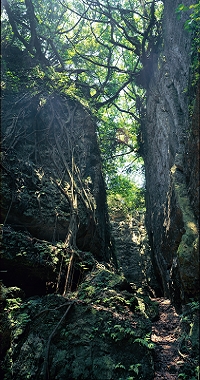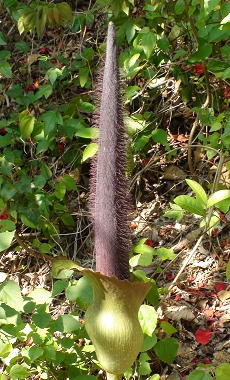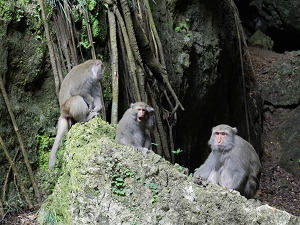December 6th, 2011, held the inauguration of the Shoushan National Nature Park, the first to be established entirely by the efforts of the civilian conservation groups, marking a new page in the history of Taiwan’s biological conservation and environmental education.
The elevation of the status of the Shoushan Park into National Park level was the dream of Den-Yi Wu, former Mayor of Kaohsiung and current Premier of the R.O.C. In the October of 2009, during his survey of the disaster damage in Southern Taiwan, Mayor Chen Chu also requested the transformation of Shoushan into a national park. The CPAMI immediately began the work of site surveying, evaluation and planning for the national Nature park.
Abundant natural and historical resources accentuating the preciousness of the unique ecologyThe Shoushan National Park includes Shoushan, Guei Shan, Banping Shan, Chi-Hou Shan and the Old City of Zuoyin. The park is divided into four zones: the special landscape zone, the historical preservation zone, the restricted zone, and the recreational zone. In the hills behind the Lon-Chuan Temple, near the entrance to the Nature Park, lies the Hsiao-Si Shell Grave, an archeological site that documents the lifestyle history of the Makatto aboriginal tribe more than 2,000 years ago. The Cihou Fort, on top of Cihou Shan in the Cijin District, was built in the late Qin Dynasty to safeguard Takao Harbor (present day Kaohsiung Harbor). It has survived such historical events as the Mutan Village Incident, Liu Mingchuan’s rule of Taiwan, and the Sino-Japanese War. The unique coral limestone terrain of the park is evidence of the rising crust along the Southwestern coasts of Taiwan. The military-controlled Northern Shoushan retains several stalactite caves, undisturbed and well-preserved.
|
Implementing the National Park Law and progressive education
The Taiwan Macaque monkeys are the best known conservation species in the park. Visitors are advised to not feed them during their trips to the park. National Park Rangers patrol the park and will issue warnings to first time violators. Repeat violators will be fined accordingly. In addition, building fires, hunting, poisoning the environment and littering are all prohibited in the park, and violators will be fined upon discovery.
|
Build cooperation and exchange platforms to improve the Shoushan National Nature Park
The establishment of the Shoushan National Nature Park went though several phases of evaluation, survey, planning and discussion with local residents and civil groups, all working toward building a consensus on the proper management and planning of the park. Mr. Cheng-Hsin Ou, Director of the Shoushan National Nature Park Planning Committee, visited local groups and listened to their advice before the park was completed, hoping to become the communication channel for the local residents and to work together toward local preservation and sustainable development. Mr. Ou hopes that the park will maintain sustainable development through local preservation, showing the population a different kind of Shoushan landscape.


![Text size [Small]](/media/system/images/font_small.jpg)
![Text size [Medium]](/media/system/images/font_normal.jpg)
![Text size [Large]](/media/system/images/font_big.jpg)







